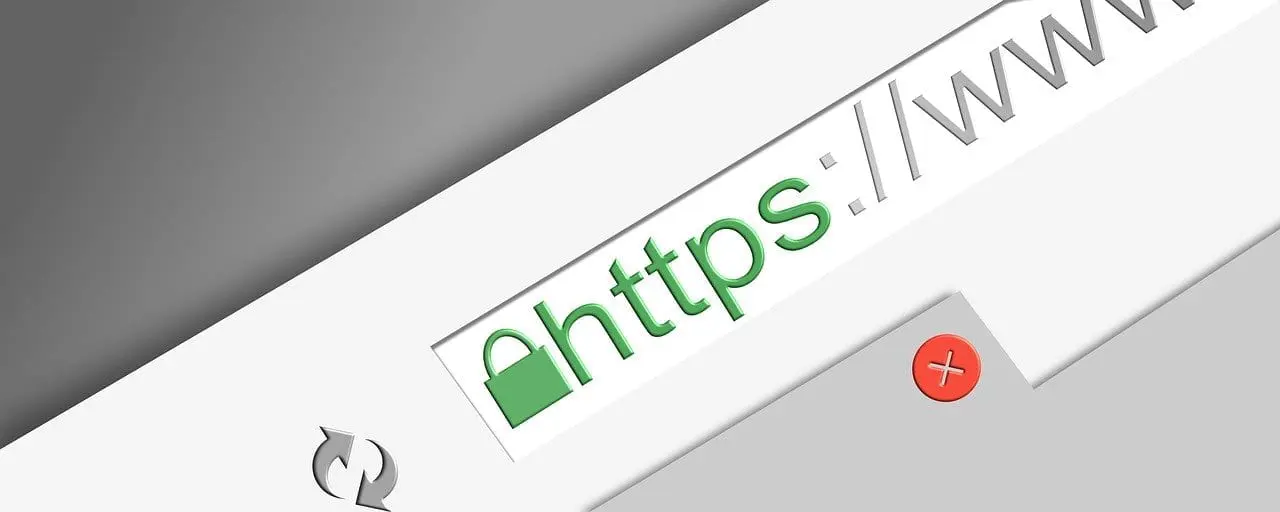Today, almost all websites are secured with SSL. However, we at 4BIS Innovations still encounter many clients who lack a secure website identifiable by the HTTPS lock icon. Not only is this unsafe, but it also negatively impacts your website's Google ranking. But what exactly are SSL and HTTPS, and how do they work?
Answers to Your Questions
- Unsecured server connection
- This site cannot provide a secure connection
- SSL connection
- SSL connection error
- What is an SSL certificate?
I’ll skip the technical details of encryption to avoid a lengthy mathematical explanation, but I will explain how an SSL certificate works and how we use it to establish a secure communication channel.
What Is SSL?
SSL stands for Secure Socket Layer and is an extension of existing protocols. For instance, web traffic can be sent via the HTTP protocol, which by itself is not secure. Anyone who can intercept HTTP traffic between a server and a browser can read the contents of that traffic. This is obviously undesirable when exchanging sensitive information, such as when visiting your bank’s website or making a payment in an online store.
This is where SSL comes into play, adding an extra layer to HTTP traffic. It upgrades the HTTP protocol to HTTPS through SSL. The SSL encryption is set up by adding an additional layer over the unsecured HTTP traffic. By cleverly using prime numbers and mathematical calculations, the data transmitted through the SSL layer becomes unreadable to anyone intercepting the traffic.
Identity Verification
Encryption is not the only benefit of SSL. It also allows us to verify the identity of a server. Through SSL, we can confirm whether the website we see is indeed the website of the bank, for example. SSL certificates consist of two main components: a private key and a public key. The private key is generated by you and consists of a series of numbers and letters. As the name suggests, this private key is not shared with anyone else. No one else can see this key.
Using this private key, you create a CSR (Certificate Signing Request) and submit it to your CA (Certificate Authority).
What Is a Certificate Authority (CA)?
A CA is an organization responsible for validating the identity of the owner of a domain or web application. Additionally, the CA generates a public certificate based on the CSR using its own private/public keys. These keys are trusted by the Root Authority (RA). Web browsers and other SSL-compatible applications automatically trust Root Authorities. Each web browser or SSL-compatible application maintains a list of major Root Authorities and their certificates. A certificate created using one of these trusted certificates is automatically accepted. Certificates operate in a hierarchy, linking your certificate to the certificates above it. This creates a link from your private key to a Root Authority. A web browser automatically follows this link to reach the Root Authority.
What Is an SSL Certificate?
What exactly is an SSL certificate? It is a certificate that enables secure communication over the internet. An SSL certificate secures the HTTP protocol, leading to the 'HTTPS lock icon' in your browser when a website is accessed securely.
GDPR Warning! If your website uses a contact form, you are required to have a secure connection to exchange contact information. An SSL certificate is what you need! Prevent the message "your connection is not private" on your website.
The Role of the Public Key
This signed key is your public key. It is linked to your private key but does not contain it. The public key is installed on the web server and offered to visitors for verifying the server’s identity. It’s akin to showing your ID to someone requesting verification of your identity. An SSL certificate serves a similar purpose, containing the authoritative certificate and confirming your information. Just like an ID, the issuing authority validates whether the ID is issued by them and is legitimate. The same principle applies to SSL certificates.
A significant advantage of the private/public key pairs is that they are linked. When you visit a website, the web server provides you with the public key. You can verify this against the authoritative certificates. The web server encrypts the traffic using the private key. You can then decrypt the traffic using the public key, completing the circle. Ultimately, the public key is created based on the private key, CSR, and is approved and verified by the Certificate Authority. This provides proof of identity and a method for building trust. This is a simple explanation of how SSL certificates play a role in securing the internet and ensuring that you are connected to the correct website.
Why SSL Is Essential
As you can see, in today’s world, it’s nearly impossible to operate without an SSL certificate. This is especially true for e-commerce sites that handle financial data, where you cannot afford to operate without a certificate. That's why at 4BIS Innovations, we offer a free SSL certificate with all our web hosting packages. We believe that all internet traffic should be secure.




